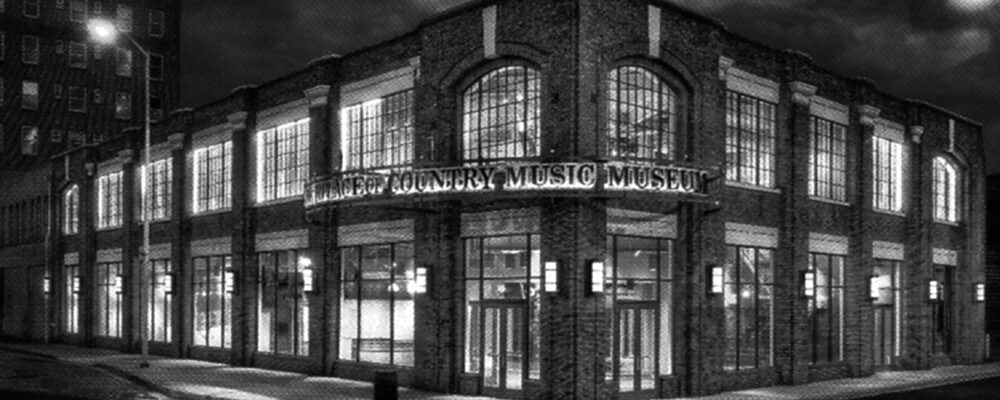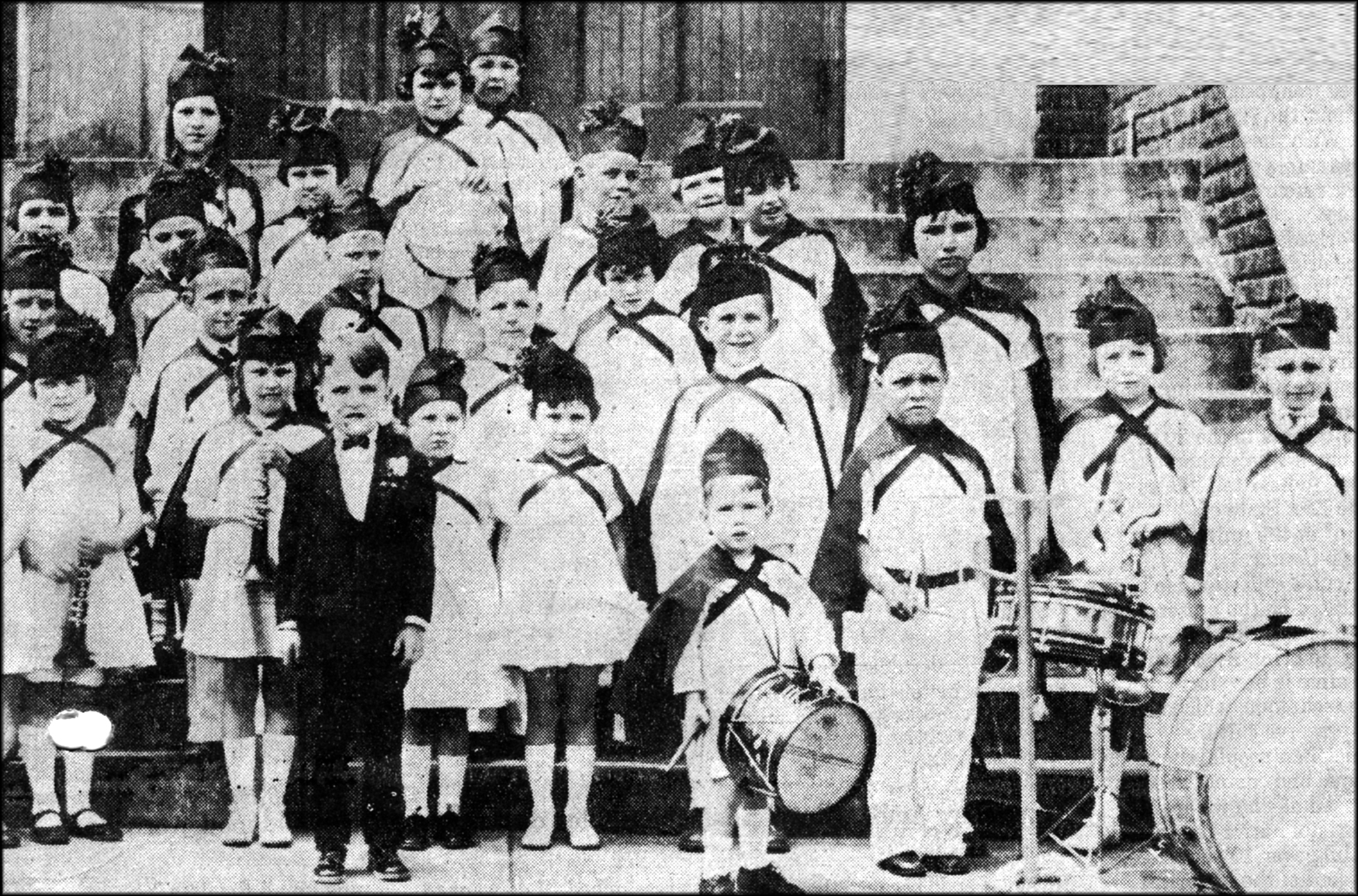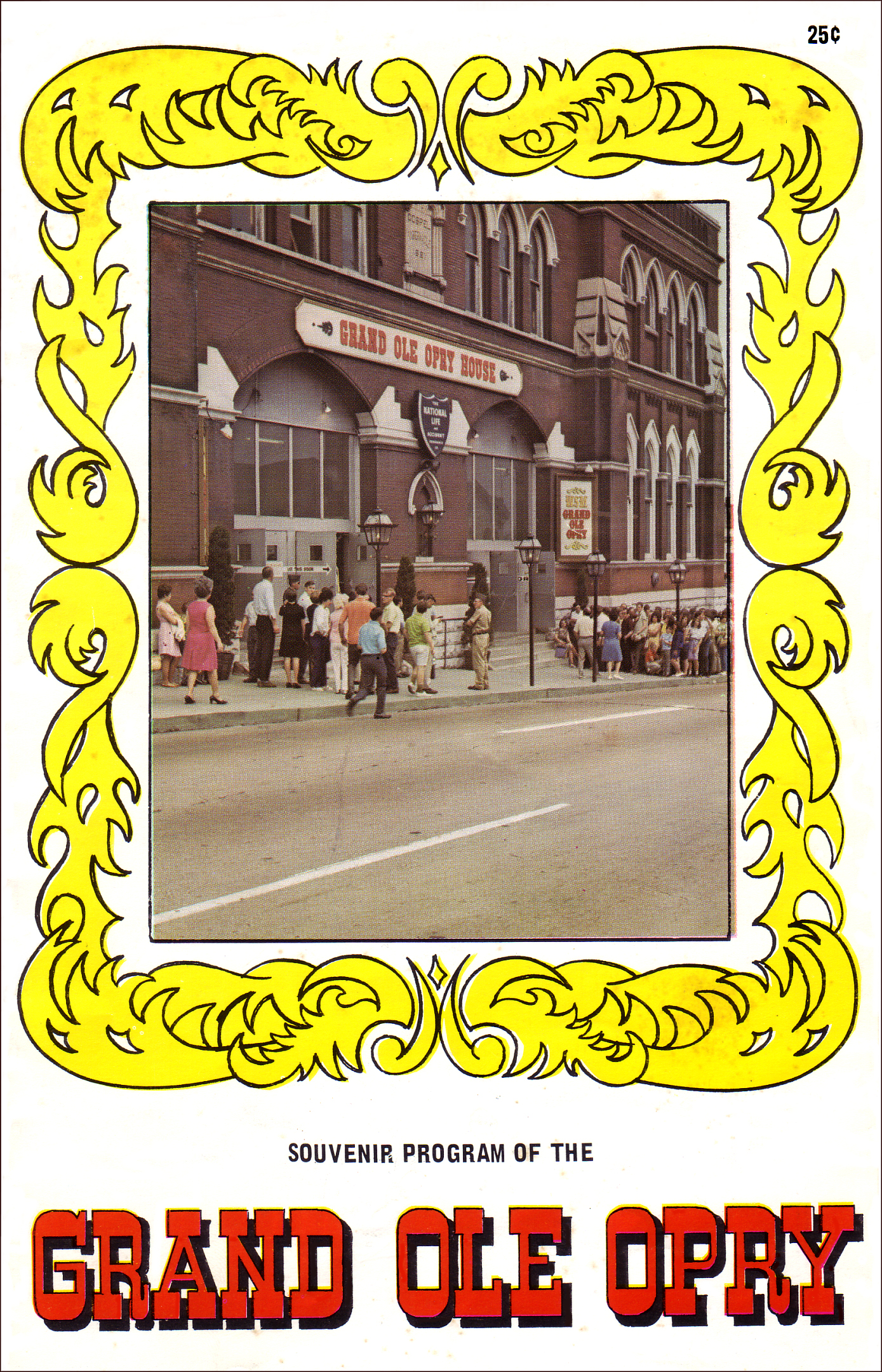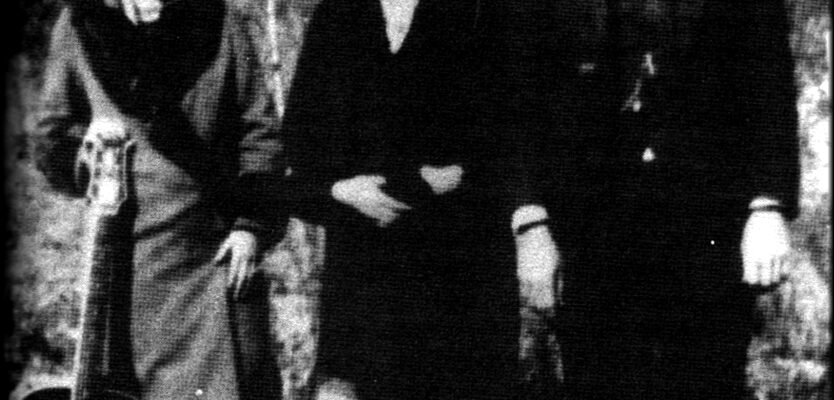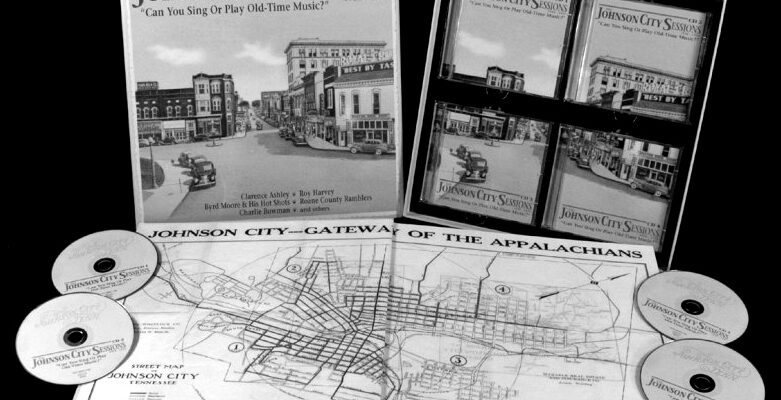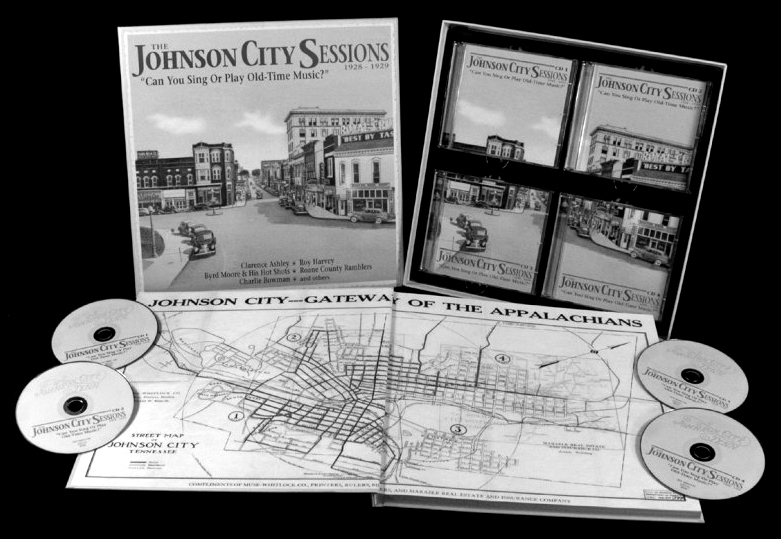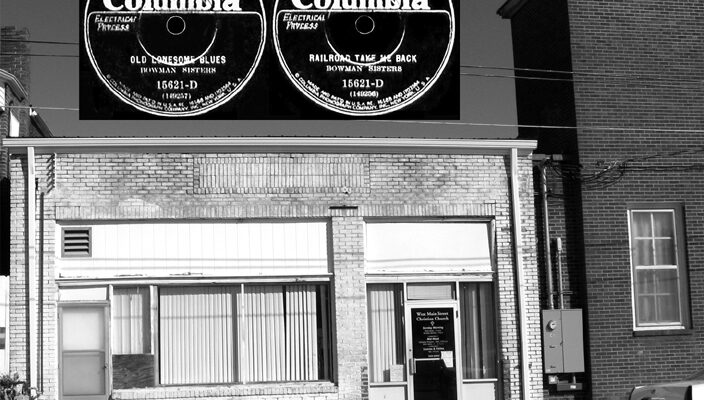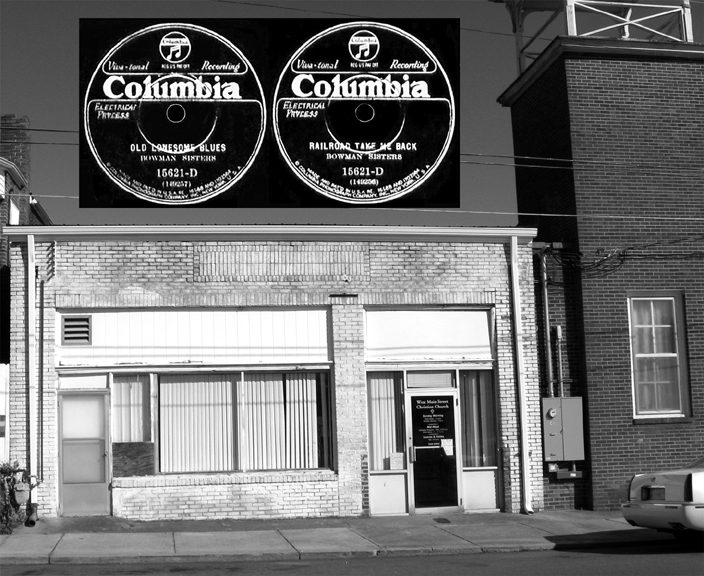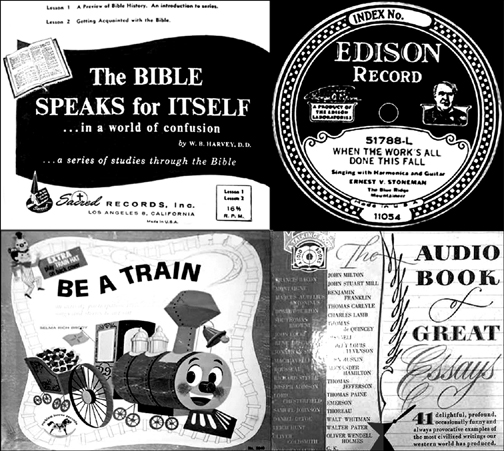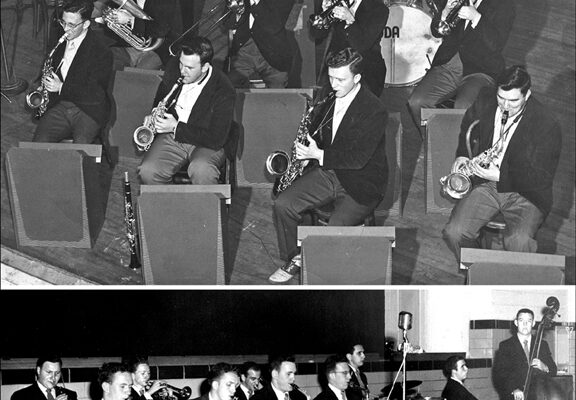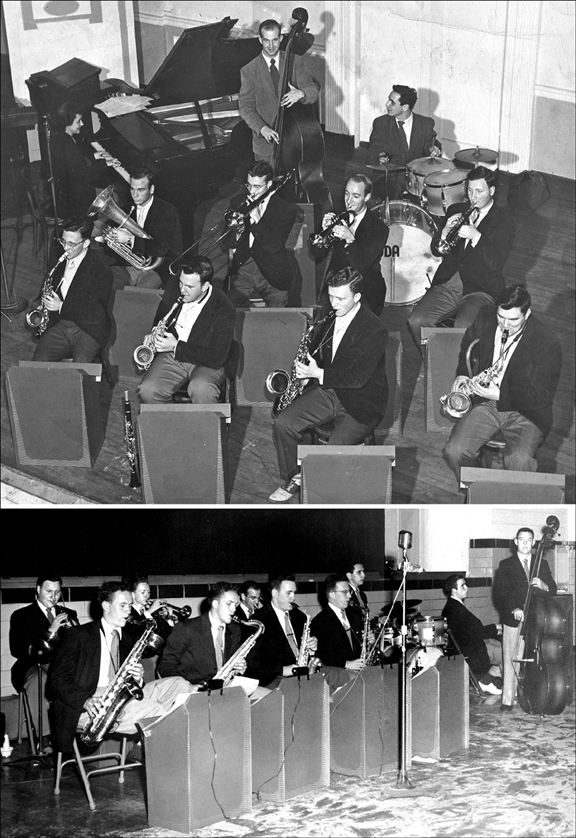On August 7, 2014, the Birthplace of Country Music Museum, located in the heart of Bristol, TN/VA, opened its doors to a host of expectant, enthusiastic visitors.
The facility is aptly named because a short journey from the new 24,000 square foot two-story building to the surrounding countryside reveals a treasure trove of early country music history. Most of it is displayed in some capacity at the new, well-researched history edifice.
Using a vacated older building, planners magically transformed the two floors into a cornucopia of relics, music samples, photographs, films and much more. It is so impressive that you have to see it to believe it.

The Museum as It Appears at Night
The museum tour begins by entering their Orientation Theatre to watch “Bound to Bristol,” a 13-minute film shown every 20 minutes and narrated by John Carter Cash, the son of Johnny Cash and June Carter.
The famous 1927 Bristol Sessions, conducted by Ralph Peer of the Victor Talking Machine Co., are largely credited for the city's designation as the Birthplace of Country Music. Names like The Carter Family (“The First Family of Country Music”), Jimmie Rodgers (“The Father of Country Music”), Ernest Van “Pop” Stoneman (recording artist of country music's first commercial decade) and others made their bow that momentous summer. They were accordingly rewarded with much-sought-after, highly fragile 78-rpm records.
I made my first visit to the museum, a nonprofit Smithsonian Institute affiliate, from Columbia, SC soon after it opened in Aug. 2014. I was immediately impressed with the ample parking lot in front with easy access to the facility. When I entered the building, my wildest expectations were surpassed.

(L to R) Mother Maybelle and Sara of the Famous Carter Family
During my second trip there this summer, I was greeted by Dr. Jessica Turner and Dave Lewis. I was there to revisit the museum and to loan them two vintage musical instruments from my family's collection. The first one, a dark-colored fiddle, contained the words, “Charlie Bowman” and “1934,” each letter carefully etched inside one of the f-holes. The second was an accordion that was played by Charlie's second oldest daughter, Jennie Bowman Cain, as she performed in Bristol over WOPI and numerous other venues across the country.
The two items will be employed by museum personnel in whatever capacity they deem best, one proposal being to include both in a future collage of old-time instruments. Their “Loan Agreement Form” is very accommodating, with numerous options, all aimed at making it easy and risk-free for folks to loan or donate artifacts to the museum.
According to a brochure, the building, formerly the site of Goodpasture Motors Co., “tells the history of these recordings, explores how sound technology shaped their success and has evolved, and highlights how this rich musical heritage lives on in today's music. Through images and artifacts, interactive exhibits, and film and sound experiences – along with a variety of educational programs, music programs, and community events – the exciting story of this music and its far-reaching influence comes alive!”
As you make your way through the well-organized rooms, you have the opportunity to observe and listen to artists, most of whom are deceased. Perhaps you regularly heard these entertainers on radio, television, phonograph records, tape recorders or at live performances. Hearing their music again, watching their videos, viewing photos of them and reading text is almost like attending a homecoming, with them being there in spirit. There is so much to see and hear in just one visit, strongly suggesting return trips.

Country Music Events by Year
An impressive elongated exhibit board near the lobby presents significant country music events, spanning the years from 1865 to 1938. Appropriate historical information is provided about the happening regarding the events such as “1925 – The Grand Ole Opry broadcasts began on radio station WSM.” Another one stated, “1902 – “Thomas Edison improves wax cylinder records through the 'gold-moulded process.'” To provide points of reference, some events were non-music related such as “1886 – The Statue of Liberty is dedicated in New York.”
Another display panel titled, “What Is a Hillbilly?” drew my interest. The explanation is far from being a simple one. The word has an ongoing complex and contradictory history and various social, economical and cultural changes have continued shifting its meaning. It is a must read and something to ponder.
Two recording of “The Stars and Stripes Forever” are played to compare the before and after audio difference between old sound technology and new state-of-the-art, developed by Bell Laboratories and Western Electric Co. Fortunately the new expertise became available in time for The Bristol Sessions.
Another popular feature is an exhibit of various instruments used in country music, a history of their origin and how they impacted the Bristol Sessions. Mentioned are fiddle, banjo, harmonica, autoharp, bones, Jew's harp, kazoo, mandolin, and piano. In case you are not familiar with bones, read the explanation on the museum display to see how and by whom the instrument was played in traditional old-time country music.
One popular display lets you and others in your group sing along into a microphone with prerecorded gospel music singers. When it is played back, you won't believe what comes out of the speaker. Get ready for a “buckle busting” laugh. Definitely do not skip this one.
Another prominent exhibit that caught my eye was a gorgeous hand-crafted quilt, donated to the museum by the Bristol TN/VA Chapter of the Embroiderers' Guild of America. Putting it together took the coordinated efforts of two diverse specialty groups, embroiderers and quilters. The text explains how the numerous fabrics in the quilt commemorate those from the 1800s to the present.
An unusual device allowed guests to send a postcard to someone back home by simply selecting the card of their choice, filling out the appropriate message and touching the card on the machine to automatically send it.
During your visit at the museum, don't forget to read the visitor comments on the large green board titled, “Join the Stay, Bristol,” and to post your comments as well. One entry stated: “Loved it very much. Very awesome. Their music is timeless. Thank you for the display.” Several visitor locations were noted during one of my visits: England, Kentucky, Texas, Nashville, Florida, Pennsylvania and Germany, to name a few.
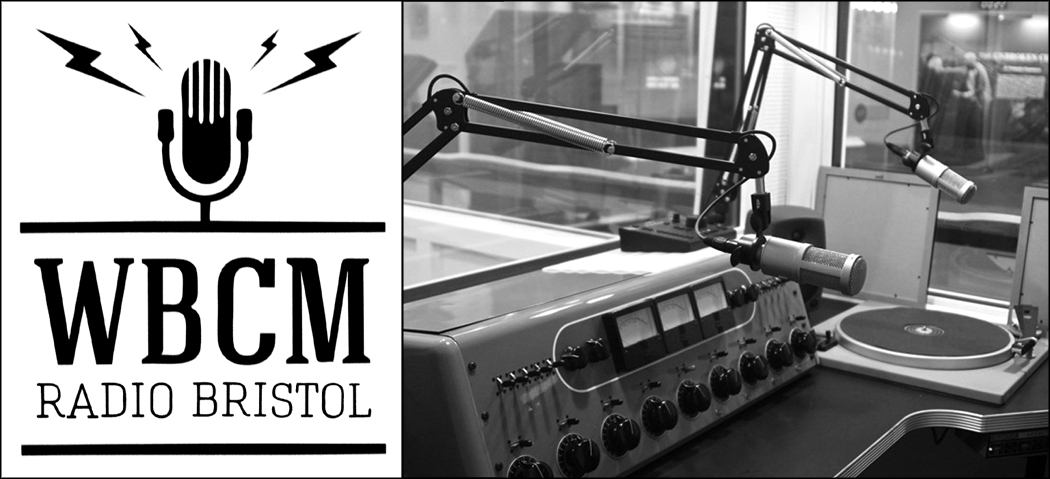
The Birthplace of Country Music Museum's New Radio Station Using Vintage Equipment
Of much interest to country music fans is a vintage radio station, appropriately named WBCM, aimed at creating worldwide broadcasts. The station and online media center allows listeners to listen at 100.1 FM, online, and through an app on their mobile devices. Future programming will focus primarily on American roots music, with free streaming programs that include three channels:
“1. Classic (the greats, and more obscure artists of old-time, bluegrass, and country music, including archival material and rare recordings from America's past),
“2. Americana (a diverse selection of contemporary artists, as showcased at the annual music festival Bristol Rhythm & Roots Reunion music festival) and
“3. Live and Local (live original programming focusing on local and regional music and culture from yesterday and today. This is the programming of the physical station at the museum).”
WBCM's first station launch was on Thursday, August 27, 2015 from 4-7 pm. Much is in store for this rebuilt station. See www/birthplaceofcountrymusic.org/wbcm for information about upcoming programming and events.
Don't depart the premises without exploring the museum's gift shop containing an impressive selection of authentic items that celebrate Bristol's deep music roots, ranging from handcrafted items made by local artisans to music-themed jewelry. They also have an impressive selection of books and music.
Take advantage of the Birthplace of Country Music Museum for a rewarding educational and entertaining music excursion back to the country music of yesteryear. Rest assured, “y'all” will not be disappointed.
